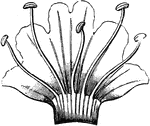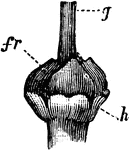Clipart tagged: ‘monocarpic perennial plant’

Viper's Bugloss Corolla and Stamens
Echium vulgare (Viper's Bugloss) is a species of Echium native to most of Europe, and western and central…

Viper's Bugloss Flower
Echium vulgare (Viper's Bugloss) is a species of Echium native to most of Europe, and western and central…

Viper's Bugloss Inflorescence
Echium vulgare (Viper's Bugloss) is a species of Echium native to most of Europe, and western and central…

Gynaeceum of Viper's Bugloss
An illustration of the Gynaeceum of the viper's bugloss. Fr, ovary; g, base of style; h, honeyglands.